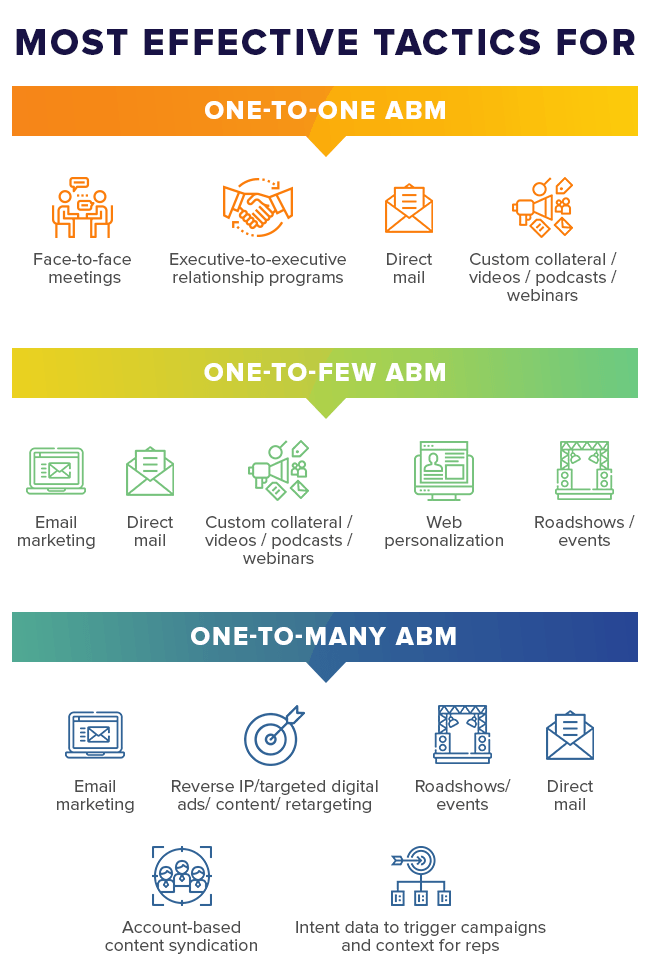ITSMA conducts an annual survey of B2B marketing companies to find out the progress of ABM adoption, as the hype around it continues to grow. Started in the early 2000s, ABM is now fast maturing into a mainstream strategy for organizations. Companies investing in Account Based Marketing services are using ABM benchmarks to measure their growth in winning both new as well as old accounts.
The survey, Raising the Game with ABM: 2018 ABM Benchmark Study, is now available and has some fascinating insights on issues like account coverage, sales collaboration, skills, tools and technology, campaign tactics, program challenges, ABM metrics, and business benefits.
But if that’s worrying you that your company has been slow in warming up to the idea that has been around since the early 2000s, this report tells you, “Don’t!”
Of the 190 companies surveyed, only 17% have been practicing ABM for 3 years or more.
Over half (52%) have been doing ABM for less than a year, while a third of the respondents have 1-2 years under their belt. So as Rob Leavitt Senior Vice President, ITSMA, and co-author of the report says, “It’s still early days.”
But if your C-suite is still not convinced about ABM, you have cause to worry. The report says, “ABM has gained recognition across the C-suite as a powerful business strategy to drive growth, innovation, and customer success.”
Once your CXO team is onboard, what kind of budgets will you be earmarking for ABM in 2019? Out of the total marketing budget, companies are forking out 28% towards ABM efforts. Five years ago, companies that practiced ABM spent 15% of their budgets on it. So the efforts are growing.
Why would that be?
The ROI is Showing!
Higher returns, clearly. Almost half of the ABM leaders interviewed are generating more than double the ROI of other marketing efforts.
How does the ROI from ABM compare to traditional marketing initiatives? The report says, “A full 80% of companies with three or more years of ABM experience are realizing “significantly higher” ROI compared with less than half of those with less experience.”
Challenges and Tech Adoption
What about the challenges faced by ABMers? These are some of the top challenges they said they face:
- Getting the data and reports we need to track results
- Personalizing and tailoring our marketing to the key contacts at each account
- Getting adequate budget to support programs and resources
- Developing campaign assets that are mass customizable to allow scale
These challenges reflect that the respondents are in the early stages of ABM adoption.
The next question is how martech savvy are the ABMers surveyed. Here’s what the report says: “For all the promise of ABM-related technology, most programs are still working to strengthen and adapt their martech foundations to support account-based approaches.
Less than half are taking advantage of website personalization, lead to account matching, or predictive analytics, among other ABM-oriented tools.”
With new tools hitting the market, the martech landscape has grown substantially, with 6829 tools available, at the last count by Scott Brinker’s www.chiefmartec.com. While not all are specifically for ABM, the possibility of using many combinations still exist, and it will be a monumental task for each company to experiment with and figure out the best ABM stack for its business goals.

Types of ABM
What are the types of ABM being used by various companies?
One-to-One ABM: This is the type where marketers align with the sales team to develop highly customized programs for individual accounts. Fifty six percent of the respondents follow this strategy. In this type of ABM, the account focus is 61:39 for existing to new accounts.
One-to-Few ABM: You identify small groups of accounts with similar business imperatives and create programs to focus on them. Sixty percent said they use this type of ABM. The account focus in this is 46% on existing ones, and 54% on new.
One-to-Many ABM: Fifty percent of marketers practice this ABM strategy and work with sales to define priority account lists and use technology and tactics to engage them. Here the account focus is 37% on existing and 63% on new ones.
Over half the companies surveyed pursue only one type of ABM while 22% do all three types.
Do Not Ignore Offline
Just because ABM leverages technology a lot, the focus often is on online tactics. But that is a mistake. The ABMers surveyed here all make use of offline tactics. As expected, one-to-one ABM uses a lot more of offline tactics than the other types: 48% of the campaign tactics are offline.
Among the most effective tactics in one-to-one ABM are face-to-face meetings executive-to-executive relationship programs, direct mail, and custom collateral/ videos/ podcasts/ webinars.
Roadshows and events, as well as direct mail are among the most effective offline tactics taken by ABMers doing one-to-few and one-to-many.
This survey helps you set ABM benchmarks for your journey against the leaders out there.
And it is well worth your time to go through each data point, as it will inform your strategy and budgets going forward.
Interested to get your ABM strategy evaluated? Get in touch!
















